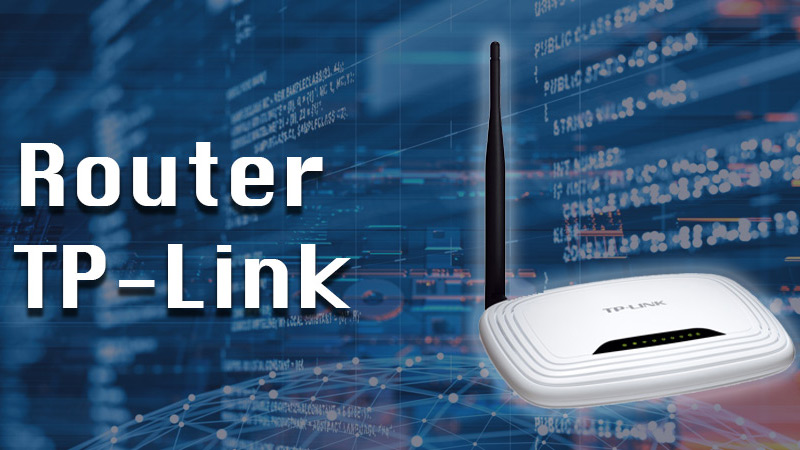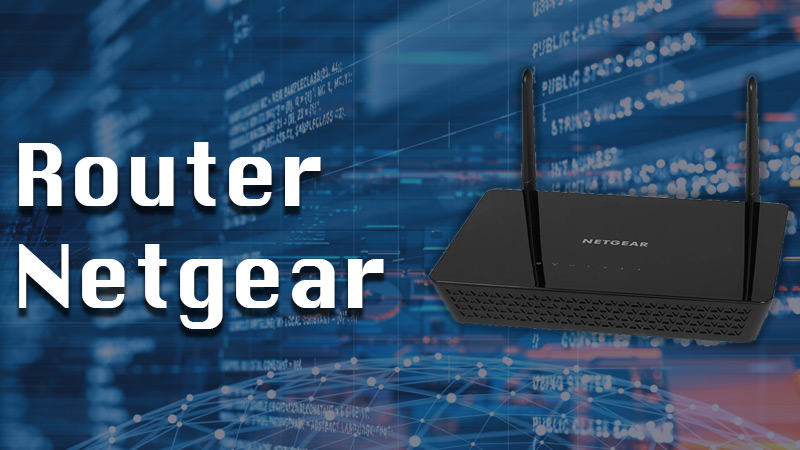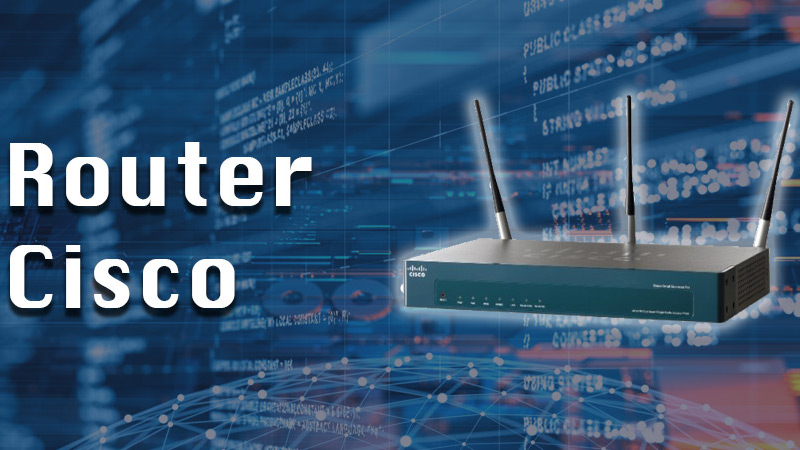
Index:
UPDATED ✅ Do you want to learn how to create and configure a router as a wireless access point? ⭐ ENTER HERE ⭐ and discover how to do it for free!
Have you ever heard of a wireless access point?. In a simple way, it is a wireless device capable of allowing interconnection between other WiFi devices and wired networks. Its function is to be intermediaries between a computer and a networkeither locally or online.
With them, it is possible for a mobile computing device (be it a tablet, smartphone or computer) to connect to a network. In general, they can also be connected to a wired network and help transmit data between said wired network and wireless devices.
For example, if you are using your mobile or laptop to connect to the Internet, you are using an access point to access that network. As you can see, it is a device that is used on a daily basis and that very few know about. Therefore, we will talk about how to create and configure a wireless access point Step by Step.
What is an AP or Wireless Access Point and how does it work?

It is known by its acronym in English WAP either APbecause of his name Wireless Access Point. As we indicated previously, it is a device whose function is to achieve the connection between computing-type mobile devices, that is, a computer, a smartphone, tablet, etc., with a network.
The connection can be made by wireless and through a wired network. In addition, they are assigned IP addresses to proceed with your configuration. The most interesting thing is that many APs can be connected to each other in order to create a much larger network for users to access from different areas.
For example, if there is an area in your home where which does not reach the WiFi signal efficientlyyou can make use of a wireless access point to establish a much wider connection of the signal transmitted by the router to your devices.
Finally, you should know that the AP acts both as a center transmitter as a radio wireless signal receiver. It can be built into a wired router or as a stand-alone device.
Why install an additional AP in my home? Main benefits

The main reason why installing an additional AP in your home is an excellent idea is because through this device it is possible to obtain a good signal in places where you usually do not have a single router. In summary, Helps boost wireless signal in your home and expand it to different areas.
If the distance between the router and the area where you are using your mobile or laptop is wide, the WiFi network may suffer from interference and not reach you efficiently. Hence, the importance of having a wireless access point in your home. Thanks to this, you will enjoy a maximum connectivity regardless of your location.
In addition to that, there are many types of APs designed by different brands. Whichever you choose, they are usually very easy to install and set up in your home. Just follow a few simple steps and you’re good to go. Later, we explain a step-by-step guide to proceed with its configuration according to its brand.
Access Point vs WiFi Repeater Which is better to install at home?
There is another device available on the market that performs a function very similar to that of the Access Point. It is a WiFi repeater. This is connected to a plug and also allows you to expand the Internet network wirelessly or via cables with the help of a port Ethernet.
The main difference between the two is that the repeater creates a new network, so you will have to change when you are in the poor coverage area. On the other hand the AP is considered another router linked to the originalso the network remains the same and the connection does not drop.
In this way, it can be said that the access points are in charge of transmit the original signalwhile the repeaters, as their name indicates, retransmit the already existing signal.
If you only need to connect a few devices, the WIFI repeater It can work for you, however, if you are looking for a completely fresh and stable network, it is better to lean towards the use of an AP. So, if you are wondering which is the best to install at home, the winner is undoubtedly the Access Point.
Steps to configure any brand of router as an access point in your home
Next, we explain step by step how you can configure any router brand as an access point in your home easily and simply. In this way, you can do it yourself without having to be an expert on the subject. Follow the instructions below:
Tp link

This is one of the most common brands out there and its configuration is simple. You just have to pay attention and follow each of the steps that we will specify:
Step 1
Connect your computer to TL-WA501G/TL-WA601G and specifically log in to the web-based utility. Then place the IP address 192.168.1.1 in the web browser.
Step 2
To avoid IP conflicts, change the LAN IP address of the access point (TL-WA501G/TL-WA601G). After changing the access point’s IP address, log back into the access point with the new IP address.
Step 3
proceed to configure wireless mode with the client and connect to the wireless network. The specific steps to do so are:
- click on “Wireless” (Wireless). Then go into Wireless mode on the client located on the left and select. If the router or access point you are connecting to does not support WDS, do not enable the WDS option.
- In case you know the SSID of the wireless network or the MAC address of the AP, you can enter it into the corresponding AP box manually. After that, select “Save”.
- You can also click the button “Survey” (Survey) to view available wireless networks. Then select the button “Connect” and ready. Then enter the “Connect” button and the client mode box, the SSID of the network and the MAC address of the AP will be automatically displayed in the box.
- When the setup is finished, you can reboot device. But first you have to click “Save” for the settings to take effect after rebooting the device.
ASUS
- Connect the AP router on the Wan port to the LAN port of the router/modem.
- Log in to the user interface on the router. Select “Management” (Administration) and then “Operating mode” (OperationMode).
- Select the AP-mode and click “Save”.
- You may get LAN IP automatically or manually. To do it automatically: Set Automatic IP Address (Yes). To do it manually: Set Auto IP Address (No), then manually fill in LAN IP, Subnet Mask, Gateway and DNS.
- Proceed to set the network name (SSID) and the password for the new network wireless.
- click on “Apply” (Apply) to save the settings.
Finally, keep in mind that in access point (AP) mode, the IP address assigned by DHCP is changed. Therefore, it is recommended install and use Device Discovery Utility to be able to find the IP address of the wireless router.
netgear

Before explaining the configuration, you should know that the AP provides WiFi and LAN connectivity. However, you should not directly connect the access point to an Internet modem. Rather, you should connect it to a router that is connected to an Internet modem.
The configuration that we will give you, is specifically for the model WAC104.
Step 1
Connect the Ethernet cable that is included in the package to one of the Ethernet ports of the Access Point. In these cases, you can use any of the four built-in LAN ports.
Step 2
proceed to connect the other end of the cable to a LAN port on the router.
Step 3
Turn on the AP on the power indicator. To verify that it was turned on, the solid green button illuminates. If this doesn’t happen, press the power button again.
Then, you have to wait for the WiFi indicator to also light up solid green. If not, you need to press the WiFi on/off button.
Step 4
Login to the AP from a wireless device (tablet, computer, smartphone, etc). To enter, you must follow the following address http://www.aplogin.net. Then enter admin as username and password as password. Next, the web management interface of the access point will be displayed.
step 5
Set up basic WiFi network and security Of the same. For them, follow these steps:
- Enter in Setup/Wireless Setup (Settings/ Wireless Settings).
- Set the AP name, SSID, region, and a security option. When it comes to the region, you cannot select the United States or Canada. Apart from that, you need to make sure that the country is set for the region in which the device is running.
- click on “Apply” (Apply).
In case you want to know more about the subject, you can consult the user manuals provided on the Internet by Netgear.
huawei
The configuration that we will explain is for the Huawei HG532c router:
- Press the reset button, to set the factory settings. To do this, you have to hold down the reset button for about 15 seconds, until the lights on the router change.
- Connect the router to the computer via a network cable.
- The router will throw you a IP address (192.168.1.1). To access the router settings, you just have to type that IP address in the browser.
- Write both in username and password the word “admin”.
- Disable DHCP in the LAN settings section.
- Enter the link: http:// + IP address + /html/ntwkall/wan.asp.
then you have to delete all existing entries and create a new one with the following parameters:
- Link Type: DSL
- WAN Connection: Enable
- IPV/IVC: 8 / 35
- List of services: INTERNET
- Port assignment: LAN1 and SSID1
- Connection Type: Bridge
- DHCP transparent transmission: enable o Enable
- Type of service: UBR without PCR
- Encryption mode: LLC
All other fields are blank. Then click on “Send” and ready.
Cisco

We will explain how to configure the access point with a PC that is directly connected to the Cisco AP541N:
Step 1
Turn on your PC and, in case you haven’t, proceed to change the PC IP Address to make sure it has an IP address from the same subnet. In case you don’t know how to do it, follow these steps:
- Go into Start (Start) in case of Windows PC and select Settings (setting). Then go into Dashboard (control Panel).
- In the dialog of Control Panelclick network (net).
- within network, select TCP/IP for the PC Ethernet card. After that, click Properties (properties).
- Within the IP Address window, click Specify an IP address (specify an IP address).
- Enter an IP address that is on the same subnet as the access point’s IP address. (The default address of the AP is 192.168.10.10). Then you can set the command to 192.168.10.250and for the PC IP subnet mask at 255.255.255.0.
- Under Subnet Mask, type 255.255.255.0. click on “OKAY” (to accept). The changes will be applied.
- When prompted to restart your computer, click “And it is” (Yes).
Step 2
connect a Ethernet cable to PC Ethernet port. The other end of that cable, connect it to the Cisco AP541N Ethernet port.
Step 3
Turn on the access point.
Step 4
Open a browser window. If you are prompted to install an Active-X plugin when you connect your device, you must follow the prompts to accept the plugin.
step 5
Enter the IP address of the Cisco AP541N in the browser bar. then press Enter. Immediately, the Access Point Configuration Utility will appear.
step 6
Once there, you have to enter your default login information. In these cases, both in username and password you have to write “cisco”.
step 7
A window will appear with the name of Getting Started (Start). In it, you can configure the device according to your specific needs. Once there, there are some recommendations that you can take into account:
- Change password of the administrator in the section of “Change Administrator Password”.
- Set the SSID and enable wireless security in the section of “SSID, Guest Access, and Security Configuration”.
- Turn on the radio interface in “Radio Settings”.
- In case you don’t use DHCP in your network, click “Change IP Address” to set the parameter Connection Type of the access point to Static. You can also change the parameters of Static IP Address (Static IP address) and Subnet Mask (Subnet Mask) with an IP address and subnet mask that match the IP addresses on your network. This avoids assigning the access point an unknown IP address.
- Have the latest version of Cisco AP541N software clicking the button “Upgrade Software”.
Linksys
To explain the procedure, We will use the configuration of the Linksys WRT54GC router model as a guide:
- Connect one end of a network cable to the main network router. The other end will plug into one of the Ethernet connectors on the Linksys router.
- From a computer you have to open the browser and enter the url of the router that was just installed. It is usually usually http://192.168.1.1/.
- Once the pop-up window opens, enter the data corresponding to the user and password. These data are supplied by the manufacturer (usually it is “admin”).
- Proceed to make the necessary settings when you open the Linksys router’s main setup page. Remember disable DHCP service, so that it can function as an AP. For that, you have to leave the automatic DHCP configuration that comes by default, in “Network connection type”.
- In “Network Configuration” select option “DHCP server”. Then press on “Save information”.
Finally, the Linksys router will restart and the process will be ready.
AP vs Hotspot. How are they different and which one is better to connect to the Internet?

The Hotspot o “hot spot” is a place or access equipment, which allows the user to connect their devices to the Internet via wireless connection. One of the aspects that characterize hotspots is that it is a captive portal in which an identification is usually requested through a Username and a Password in order to be used.
They generate their own internet signal, which means that they do not have to be connected to a router in order to work. This is the main difference between an AP and a hotspot. In this way, you manage to take an Internet signal anywhere. Even today many mobiles can be used as “hot spots”.
One of the most interesting points of the Hotspots is that offer secure internet connection with limited access, apart from the fact that they can be transported anywhere. To know which one benefits you the most when connecting to the Internet, you must be clear about your needs.
If for example you only need expand internet signal in your home, it works much better for you to take advantage of a access point. On the contrary, if you want to share the Internet in areas isolated from your home, it is convenient to have a hotspot.
In case you have a restaurant or any business and you do not have a router, but you still want to offer a connection to your clients, a hotspot can be good for you that generates its own network and gives access to people in a limited way.
networks